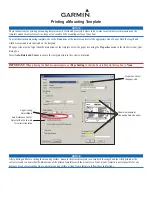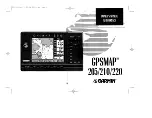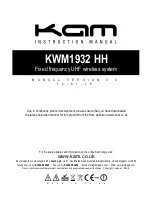
Townsend Labs Sphere L22 Precision Microphone System Guide
Off-Axis Correction
37
Rear Miking
Sometimes it’s desirable to intentionally record tracks with lots of room ambience to create a sense of
depth in the mix. For example, background vocals can benefit from more room sound so they sit
farther back, while the lead vocal may be easier to hear if left relatively dry.
You can achieve this result for background vocals by placing an omni mic farther back from the
sources. While this can produce excellent results, some cases might require even more ambience.
Moving the mic farther back might work, but recording spaces are often small, which limits the mic
position. This could also yield a sound that is too reverberant, which may not be desirable.
Another option blends close mics with room mics. While this approach can often work fantastically,
different arrival times at each mic may cause comb filtering due to phase cancellations between them.
A third option is to use a sub-cardioid microphone facing directly away from the sound source. This
emphasizes room pickup, and because it’s a single mic, there are no phase cancellations. The
downside is that the rear pickup of most directional mics is heavily colored, so the direct sound might
not be so great. Cardioid mics tend to have the most rear coloration. Using some flavor of sub- or
wide-cardioid tends be less colored, but off-axis coloration can still be a significant problem for this
type of application.
Because Off-Axis Correction produces a response with significantly less off-axis coloration, it is
much more practical to use these rear miking techniques. It is not even necessary to physically reverse
the microphone. In the plug-in, activate the
REV
button during or after tracking, and the polar pattern
rotates 180°. Then dial in the pattern control to achieve the precise ratio of room and direct sound.
Additional Applications
There are endless uses for Sphere’s Off-Axis Correction feature. Room miking can greatly benefit
from this technology because you can often better isolate the reverb from the direct sound by using a
cardioid pattern. You can also use Off-Axis Correction on room mics to produce a more accurate
omni pattern, which often sounds more open and airy.
You can also sometimes diagnose poor acoustics by listening to the pure reverb signal. Position the
mic 180° off-axis and a couple meters away from a snare drum. Hit the snare and listen for flutter
echoes and other sonic artifacts. Position and point the mic in different places until you find the right
location.
The following chapters contain a wealth of information about how to use Sphere to record vocals
and other instruments.
Содержание Sphere L22
Страница 1: ...Precision Microphone System Hardware and Software Guide Version 161003 ...
Страница 2: ......
















































